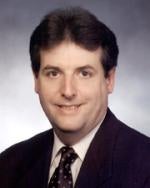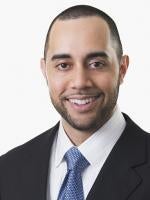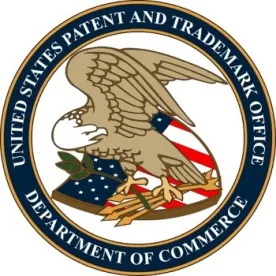In view of recent US Court of Appeals for the Federal Circuit decisions, the US Patent and Trademark Office (PTO) issued two new guidelines: revised 2019 Patent Subject Matter Eligibility Guidance, and Examining Computer-Implemented Functional Claim Limitations for Compliance with 35 USC 112.
2019 Patent Subject Matter Eligibility Guidance
The 2019 Patent Subject Matter Eligibility Guidance is similar to the previous guidelines, except Step 2A of the Alice/Mayo test has been divided into first and second prongs. The revised Alice/Mayo test is as follows:
Step 1: Does the claimed subject matter fall within the four statutory categories of subject matter (i.e., process, machine, manufacture or composition of matter)? No, the claim is not subject matter eligible. Yes, go to Step 2A.
Step 2A:
Prong One: Does the claim recite a judicial exception? No, the claim is subject matter eligible. Yes, go to Prong Two. To determine whether the claim recites a judicial exception, the examiner should:
a. Identify specific limitation(s) in the claim that recites an abstract idea; and
b. Determine whether the identified limitation(s) falls within following identified subject matter groupings of abstract ideas:
1. Mathematical concepts: mathematical relationships, mathematical formulas or equations, mathematical calculations
2. Certain methods of organizing human activity: fundamental economic principles or practices (including hedging, insurance, mitigating risk); commercial or legal interactions (including agreements in the form of contracts; legal obligations; advertising, marketing or sales activities or behaviors; business relations); managing personal behavior or relationships or interactions between people (including social activities, teaching, and following rules or instructions)
3. Mental processes: concepts performed in the human mind (including an observation, evaluation, judgment, opinion).
Prong Two: Is the recited judicial exception integrated into a practical application? Yes, the claim is subject matter eligible. No, go to Step 2B.
Exemplary considerations for determining whether the judicial exception is integrated into a practical application include:
a. An additional element of the claim reflects an improvement in the functioning of a computer, or an improvement to other technology or technical field.
b. An additional element applies or uses the judicial exception to effect a particular treatment or prophylaxis for a disease or medical condition.
c. An additional element implements a judicial exception with, or uses a judicial exception in conjunction with, a particular machine or manufacture that is integral to the claim.
d. An additional element effects a transformation or reduction of a particular article to a different state or thing.
e. An additional element applies or uses the judicial exception in some other meaningful way beyond generally linking the use of the judicial exception to a particular technological environment, such that the claim as a whole is more than a drafting effort designed to monopolize the exception.
Step 2B:
If the claim is directed to a judicial exception, does it provide an inventive concept (i.e., do the additional elements amount to significantly more than the exception itself?) Yes, the claim is subject matter eligible. No, the claim is not subject matter eligible.
However, if it is determined in Step 2B that the additional elements merely recite well-understood, routine, conventional activity, further analysis is required. An additional element (or combination of elements) is not well understood, routine or conventional unless the examiner finds and expressly supports a rejection in writing with one or more of the following:
(1) A citation to an express statement in the specification or to a statement made by an applicant during prosecution that demonstrates the well-understood, routine, conventional nature of the element(s).
(2) A citation to one or more court decisions discussed in MPEP § 2106.05(d)(II) as noting the well-understood, routine, conventional nature of the element(s).
(3) A citation to a publication that demonstrates the well-understood, routine, conventional nature of the additional element(s). The publication should describe the state of the art and discuss what is well known and in common use in the relevant technology.
(4) A statement that the examiner is taking official notice of the well-understood, routine, conventional nature of the additional element(s).
If the examiner’s taking of official notice is challenged, the examiner must provide one of the items from paragraphs (1) through (3), or an affidavit or declaration under 37 CFR § 1.104(d)(2) setting forth specific factual statements and an explanation to support the examiner’s position.
The division of Step 2A of the Alice/Mayo test into two prongs appears to indicate that the PTO is trying to teach the examiners to engage in more critical analysis of whether a § 101 rejection is warranted and thereby decrease the number of § 101 rejections.
Guidelines for Examining Computer-Implemented Functional Claim Limitations for Compliance with 35 USC 112
The Examining Computer-Implemented Functional Claim Limitations for Compliance with 35 USC 112 guidelines consist of two parts. Part I focuses on claim interpretation under 35 USC § 112(f) and compliance with the definiteness requirement of 35 USC § 112(b). Part II focuses on the written description and enablement requirements of 35 USC § 112(a).
The guidelines state that examiners should first determine the broadest reasonable interpretation of the claim consistent with the specification as it would be interpreted by one of skill in the art. Examiners will apply 35 USC § 112(f) if the claim meets the three-prong analysis:
1. Does the claim uses the term “means” or “step” or a generic placeholder?
2. Is the term modified by functional language?
3. Is the term modified by sufficient disclosed structure, material or acts for performing the function ?
To determine whether a word, term or phrase coupled with a function denotes structure, examiners should check whether:
a. The specification provides a description sufficient to inform one of ordinary skill in the art that the term denotes structure
b. General and subject matter dictionaries provide evidence that the term has achieved recognition as a noun denoting structure
c. The prior art provides evidence that the term has an art recognized structure to perform the claimed function
Under the guidelines, the determination that the claim is being interpreted under § 112(f) should be expressly stated in the office action. In response to the office action, if the applicant does not want the claim interpreted under § 112(f), the applicant must either present a sufficient showing to establish that the claim limitation recites sufficient structure to perform the claimed function, or amend the claim limitation in a way that avoids interpretation under § 112(f).
The guidelines also require that to avoid an indefiniteness rejection of a § 112(f) claim limitation, the specification must disclose an algorithm for performing the claimed specific computer function. An algorithm is defined as a “finite sequence of steps for solving a logical or mathematical problem or performing a task.” The algorithm may be expressed in any understandable terms, including a mathematical formula, prose or a flow chart. The algorithm must be sufficient to perform the entire claimed function.
The guidelines further require that whether or not the claim is construed under § 112(f) as a means plus function claim, it must still be evaluated for written description and enablement. The written description must show that those skilled in the art had possession of the claimed subject matter at the time of filing, but information that is well known in the art need not be described in detail in the specification. In particular, for a computer-implemented invention, examiners should determine whether the specification discloses the computer and algorithm(s) that achieve the claimed function in sufficient detail.
As to the enablement requirement under § 112, the guidelines instruct that the specification must enable one of ordinary skill in the art to make and use the full scope of the claimed invention without undue experimentation. With respect to the breadth of the claim, the relevant concern is whether the scope of enablement is commensurate with the scope of protection sought by the claims.
The PTO is accepting written comments on the subject matter eligibility guidelines and § 112(f) compliance of computer-implemented inventions until March 8, 2019.





 />i
/>i
